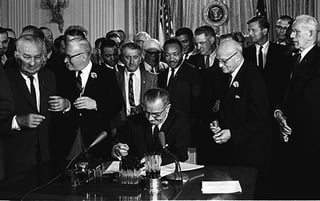The National Historic Preservation Act (NHPA, Pub. L. 89–665, 80 Stat. 915) is legislation intended to preserve historic and archaeological sites in the United States of America. The act created the National Register of Historic Places, the list of National Historic Landmarks, and the State Historic Preservation Offices. Senate Bill 3035, the National Historic Preservation Act, was signed into law on October 15, 1966, and is the most far-reaching preservation legislation ever enacted in the United States. Several amendments have been made since. Among other things, the act requires federal agencies to evaluate the impact of all federally funded or permitted projects on historic properties (buildings, archaeological sites, etc.) through a process known as Section 106 Review. Many of the historic preservation provisions that had been in 16 U.S.C. are present in 54 U.S.C. §§ 300101–320303 by Pub. L. 113–287 (text) (PDF), which was signed into law on December 19, 2014. From Wikipedia
